Male Breast Reduction
Gynecomastia Surgery
Overview
- A male breast reduction, also known as gynecomastia surgery, reduces breast size in men resulting in a flatter, more masculine chest contour
- In severe cases of gynecomastia, excess skin will be removed in addition to the breast tissue
- Sometimes to achieve the best contour and position of the nipple/areola, the nipple/areola is removed and replaced in the proper position as a skin graft
- Liposuction (suction-assisted lipectomy) may be used as an adjunct to this surgery to further improve chest contour

Male Breast Reduction Benefits
- Removal of any or all of the following to reshape the chest to create a more masculine chest contour: skin, breast tissue, and fat
- Repositioning or reshaping of the nipple and areolar complex to a more normal male appearance
- Improve confidence and overall well-being
Consultation
- During your male breast reduction consultation, Dr. Cho will assess your current medical history, including medications, vitamins and herbal supplements you take, alcohol, tobacco, and drug use
- She will also ask about family history of breast cancer and if you’ve had any biopsies, and if you have any hormonal disorders or have been to an endocrinologist
- Examine and measure your chest/breasts, including detailed measurements (of breast size and shape, skin quality) placement of your nipples and areolas, and check for any masses or lesions
- Testicular exam may also be done, as in some cases gynecomastia can be associated with testicular masses
- Take photographs
- Discuss your goals and what her recommendations are for what procedure(s) would best meet your goals
Pre- and Post-Op Care
- Do not take any blood thinning medications for 1 week before surgery, including aspirin, NSAIDs, ibuprofen/motrin, naproxen (also, avoid any herbal supplements or vitamins which can prolong bleeding)
- Do not smoke, vape, or take nicotine-containing products before or after your surgery as they can impair the healing process
- You will typically be allowed to sponge bathe, but do not shower until the drains are removed cleared by Dr. Cho
- Wear your compression garment at all times if possible
- Take medications as directed
- Avoid heavy lifting as directed by your surgeon
- Come to all postoperative visits as scheduled
Recovery
- 4 weeks
- During your recovery, you will have a compression garment that will minimize swelling as your chest heals
- Drains may be in place that look like small thin tubes that will drain any excess blood or fluid that may collect - you will be taught how to maintain and empty these and keep an accurate record of the drainage
- You will be given instructions on how to care for the surgical sites after surgery, and how to take the prescribed medications to reduce pain and risks of infection
- It is important that the surgical incisions are not subjected to excessive force, swelling, abrasion or motion during the time of healing
- To help avoid postoperative complications and facilitate healing, you will not be able to lift more than 15 lbs or do any strenuous activities particularly if it involves pushing or pulling for a few weeks
Ideal Candidate
- You are a nonsmoker, physically healthy with a stable weight
- You are a man bothered by feeling that their breasts are too large
- You have realistic expectations
- You are a male whose breast development has stabilized
Patient Review

Dr. Cho and her team are outstanding! From the moment you walk into the office, you’re met with warmth, professionalism, and genuine care. Dr. Cho is incredibly skilled, thoughtful, and takes the time to make sure every question is answered. Her nurse, Catie, is phenomenal—kind, knowledgeable, and always reassuring. The entire office staff is friendly, efficient, and makes every visit seamless... See full review
Joseph B. / Patient

Surgery is a Big Decision
We are here to answer any questions you have and help you determine the right choice for you. If you are considering surgery, please schedule a consultation with Dr. Cho today. She would be honored to discuss your goals and help you achieve the look you desire.



